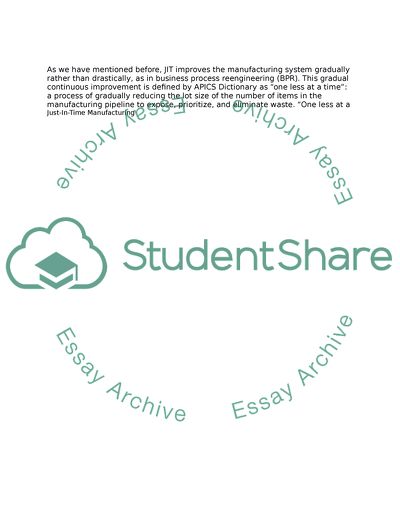Cite this document
(Lean Manufacture, Just-In-Time Approach, Total Quality Management, and Assignment Example | Topics and Well Written Essays - 2250 words - 2, n.d.)
Lean Manufacture, Just-In-Time Approach, Total Quality Management, and Assignment Example | Topics and Well Written Essays - 2250 words - 2. https://studentshare.org/engineering-and-construction/1874692-manufacturing-systems-and-quality
Lean Manufacture, Just-In-Time Approach, Total Quality Management, and Assignment Example | Topics and Well Written Essays - 2250 words - 2. https://studentshare.org/engineering-and-construction/1874692-manufacturing-systems-and-quality
(Lean Manufacture, Just-In-Time Approach, Total Quality Management, and Assignment Example | Topics and Well Written Essays - 2250 Words - 2)
Lean Manufacture, Just-In-Time Approach, Total Quality Management, and Assignment Example | Topics and Well Written Essays - 2250 Words - 2. https://studentshare.org/engineering-and-construction/1874692-manufacturing-systems-and-quality.
Lean Manufacture, Just-In-Time Approach, Total Quality Management, and Assignment Example | Topics and Well Written Essays - 2250 Words - 2. https://studentshare.org/engineering-and-construction/1874692-manufacturing-systems-and-quality.
“Lean Manufacture, Just-In-Time Approach, Total Quality Management, and Assignment Example | Topics and Well Written Essays - 2250 Words - 2”. https://studentshare.org/engineering-and-construction/1874692-manufacturing-systems-and-quality.


